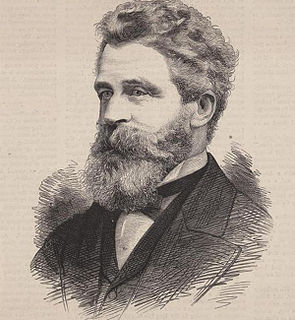There have been two baronetcies created for persons with the surname Armstrong, both in the Baronetage of the United Kingdom. One creation is extant as of 2010.
Contents
The Armstrong Baronetcy, of Gallen Priory in the King's County, was created on 18 September 1841 for Andrew Armstrong, [1] Receiver-General of Stamps in Ireland and Member of Parliament for King's County. The third Baronet was High Sheriff of King's County in 1914. The Armstrong family was originally from the Scottish Borders. Andrew Armstrong, ancestor and namesake of the first Baronet, settled in County Fermanagh in the early 17th century. [2]
King's County was a parliamentary constituency in Ireland, represented in the House of Commons of the United Kingdom. It returned two Members of Parliament (MPs) 1801–1885 and one in 1918–1922.
The High Sheriff of King's County was the British Crown's judicial representative in King's County, Ireland from 1556, when King's County was created, until 1922, when the office was abolished in the new Free State and replaced by the office of Offaly County Sheriff. The sheriff had judicial, electoral, ceremonial and administrative functions and executed High Court Writs. In 1908, an Order in Council made the Lord-Lieutenant the Sovereign's prime representative in a county and reduced the High Sheriff's precedence. However the sheriff retained his responsibilities for the preservation of law and order in the county. The usual procedure for appointing the sheriff from 1660 onwards was that three persons were nominated at the beginning of each year from the county and the Lord Lieutenant then appointed his choice as High Sheriff for the remainder of the year. Often the other nominees were appointed as under-sheriffs. Sometimes a sheriff did not fulfil his entire term through death or other event and another sheriff was then appointed for the remainder of the year. The dates given hereunder are the dates of appointment. All addresses are in King's County unless stated otherwise.

Clan Armstrong is a Lowland Scottish clan of the Scottish Borders. The clan does not currently have a chief recognised by the Lord Lyon King of Arms and therefore it is considered an Armigerous clan.
The Armstrong Baronetcy, of Ashburn Place in the County of London, was created on 19 October 1892 for George Armstrong, [3] owner of The Globe newspaper. The title became extinct on the death of the third Baronet in 1944.

The Globe was a British newspaper which ran from 1803 to 1921. It was founded by Christopher Blackett, the coal mining entrepreneur from Wylam Northumberland who commissioned the first commercially useful adhesion steam locomotives in the world. It merged with the Pall Mall Gazette in 1921. Under the ownership of Robert Torrens during the 1820s it supported radical politics, and had a reputation associating it closely with Jeremy Bentham. By the 1840s it was more mainstream, and received briefings from within the Whig administration. In 1871 it was owned by a Tory group headed by George Cubitt, who brought in George Armstrong as editor. It was controlled shortly before World War I by Max Aitken.





